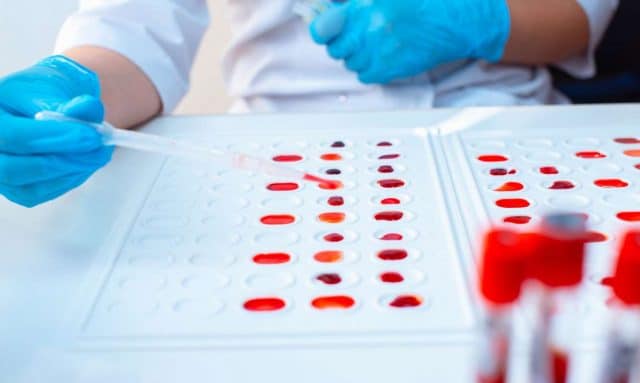If you’re interested in understanding how platelets are formed, then you need to know about thrombopoietin receptor. This protein is a key player in the process of thrombopoiesis, or platelet formation. By unraveling the mysteries of thrombopoietin receptor, researchers hope to gain a deeper understanding of how this critical process works and develop new ways to treat platelet disorders.
Platelets play an essential role in hemostasis and thrombosis, which are vital processes that prevent excessive bleeding and help heal wounds. When platelets are activated, they clump together at the site of an injury to form a clot that stops bleeding. However, when there is an imbalance in the production or function of platelets, it can lead to serious health problems such as bleeding disorders or blood clots. Understanding thrombopoietin receptor’s role in regulating platelet production could provide insights into how these conditions occur and open up new avenues for treatment.
The Importance of Platelets in Hemostasis and Thrombosis
You rely on platelets to prevent excessive bleeding, but they can also lead to dangerous blood clots that could put your life at risk. Platelets are small, disc-shaped cells in your blood that play a critical role in hemostasis and thrombosis. When you experience a cut or injury, platelet activation is triggered by chemical signals that cause them to change shape and become sticky. This allows them to adhere to the damaged area and form a plug that stops bleeding.
Platelet aggregation is essential for maintaining proper hemostasis, but it can also lead to thrombosis if not regulated correctly. In some cases, platelets may aggregate too much and form clumps or emboli that obstruct blood flow in vital organs such as the heart or brain. This can result in serious conditions such as heart attack or stroke. Understanding the mechanisms of platelet activation and aggregation is crucial for developing effective therapies for both bleeding disorders and thrombotic events.
Thrombopoiesis: Understanding Platelet Formation
By comprehending the process of how blood cells are produced, we can gain insight into how platelets form. Thrombopoiesis is the complex process by which megakaryocytes produce and release platelets into the circulation. The identification process involves several growth factors, including thrombopoietin (TPO), a hormone that stimulates the proliferation and maturation of megakaryocytes.
TPO binds to its receptor, c-Mpl, on the surface of megakaryocyte progenitor cells and promotes their differentiation into mature megakaryocytes. These large cells undergo endoreplication, a unique process in which they replicate their DNA multiple times without undergoing cell division, resulting in polyploid nuclei. Finally, mature megakaryocytes extend long protrusions called proplatelets from their cytoplasmic membrane into the bloodstream where they fragment to generate thousands of new platelets. Understanding these intricate processes and growth factors involved in thrombopoiesis has opened new avenues for developing therapeutic agents for patients with bleeding disorders or thrombocytopenia.
The Role of Thrombopoietin Receptor in Platelet Production
Imagine your body as a factory where megakaryocytes are the workers and thrombopoietin receptor is the manager, directing the production of platelets. Thrombopoietin signaling plays a critical role in regulating megakaryocyte development and differentiation. When thrombopoietin binds to its receptor on the surface of megakaryocytes, it triggers a cascade of signals that promote cell growth and division, leading to the formation of mature megakaryocytes.
The activation of thrombopoietin receptor also stimulates cytoskeletal rearrangements within megakaryocytes, enabling them to extend long branching processes called proplatelets. These proplatelets undergo fragmentation into individual platelets in the bone marrow sinusoids before entering circulation. Furthermore, studies have shown that loss-of-function mutations in thrombopoietin receptor impair platelet production and lead to severe bleeding disorders. Therefore, understanding the mechanisms underlying thrombopoietin signaling and its role in megakaryocyte development is crucial for developing new therapies for thrombocytopenia.
Interactions with Other Proteins and Signaling Pathways
As different proteins interact with thrombopoietin receptor, the regulation of megakaryocyte development and platelet production becomes a complex network that requires further exploration. One such protein is c-Mpl, which binds to thrombopoietin receptor in order to activate downstream signaling pathways. This ultimately leads to the differentiation of hematopoietic stem cells into megakaryocytes, which are responsible for producing platelets.
In addition to protein binding, there are also downstream effects that occur as a result of interactions with thrombopoietin receptor. For example, activation of the JAK2/STAT5 pathway has been shown to be crucial for proper megakaryocyte development and platelet production. Furthermore, other signaling pathways such as PI3K/Akt and MAPK/ERK have also been implicated in regulating these processes. Overall, understanding the complex network of protein interactions and downstream effects associated with thrombopoietin receptor is critical for developing new treatments aimed at improving platelet production in patients with various blood disorders. (1)
Clinical Implications and Potential Therapies for Platelet Disorders
There’s potential for developing new therapies to improve platelet production in patients with various blood disorders, based on clinical implications of the thrombopoietin receptor network. Platelet dysfunction can lead to a range of medical conditions, such as bleeding disorders or thrombotic events. However, current treatments for these conditions are limited and often have significant side effects. Understanding the mechanisms behind platelet formation through the thrombopoietin receptor pathway may provide insight into potential treatments.
One approach involves using recombinant forms of thrombopoietin (TPO), which stimulate platelet production by binding to the TPO receptor on bone marrow cells. These drugs have shown promising results in clinical trials, but their long-term safety and efficacy still need further investigation. Other potential therapies include small molecule inhibitors that target specific proteins involved in the TPO signaling pathway or gene therapy approaches that increase expression of TPO or other key genes involved in platelet formation. Further research into these treatments could provide much-needed options for patients with platelet dysfunction. (2)
Frequently Asked Questions
What are the different types of platelet disorders and their symptoms?
To diagnose platelet disorders, doctors may use blood tests, bone marrow biopsies, and genetic testing. Symptoms vary depending on the disorder but can include excessive bleeding or clotting. Treatment options range from medications to blood transfusions or surgery.
How do platelets interact with other blood cells in the process of hemostasis?
Platelet interactions with other blood cells are crucial in the hemostasis mechanisms that prevent excessive bleeding. Platelets adhere to injured vessels, activate clotting factors, and recruit other platelets to form a stable plug, sealing the site of injury.
What are some of the challenges in developing therapies for platelet disorders?
Developing therapies for platelet disorders is challenging due to the complex nature of platelet function and regulation. Targeting specific pathways, such as thrombopoietin receptor signaling, may hold promise but requires extensive research and clinical trials.
Can thrombopoietin receptor mutations lead to other health conditions besides platelet disorders?
Thrombopoietin receptor mutations can lead to comorbidities such as liver failure, myelodysplastic syndrome, and leukemia. TPO receptor inhibitors can also have an impact on non-hematopoietic cells in the body, potentially causing adverse effects.
How might advancements in platelet research impact the treatment of other medical conditions?
You can expect potential implications and future applications of advancements in platelet research to impact the treatment of other medical conditions. Precise technical research could lead to new therapies for a variety of illnesses beyond platelet disorders.

Speaks from heart, always too passionate and driven by emotions. Spins the words with kindness & sharpness, intriguing your ever-inscrutable minds.




